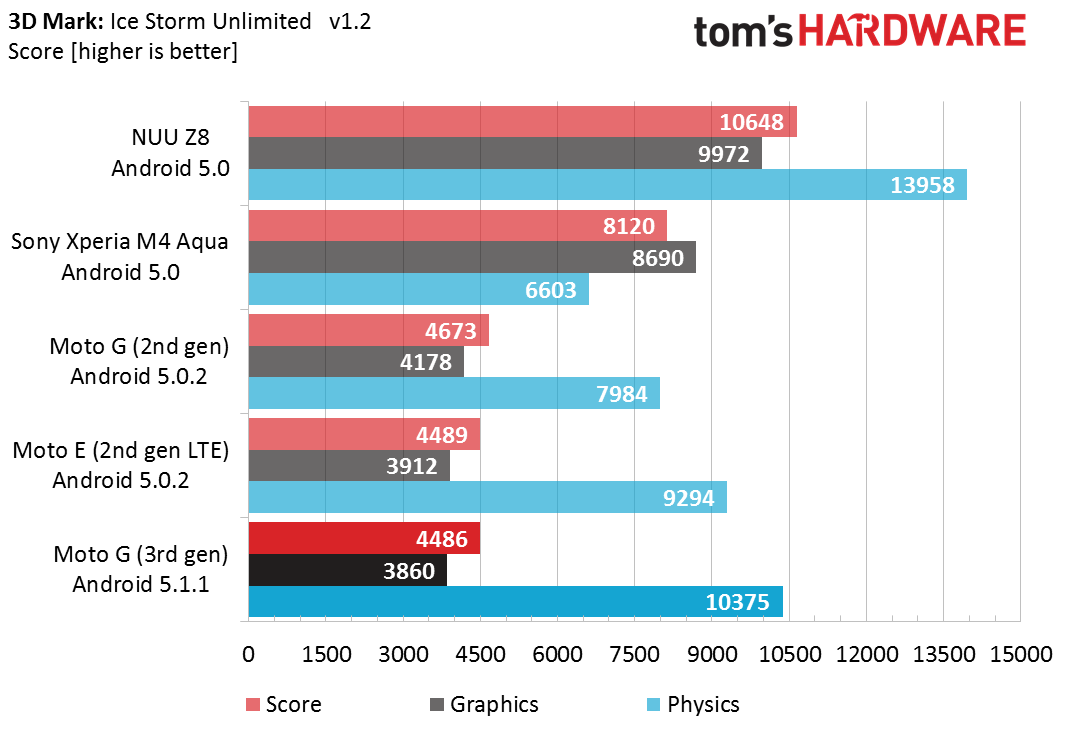Motorola Moto G (3rd gen) Review
Why you can trust Tom's Hardware
GPU And Gaming Performance
Mobile GPU performance is becoming increasingly important as people begin to see their phones and tablets as portable gaming machines. This section explores GPU performance with several synthetic and real-world game engine tests. To learn more about how these benchmarks work, what versions we use, or our testing methodology, please read our article about how we test mobile device GPU performance.
Both the Moto G (3rd gen) and Moto E (2nd gen) use an Adreno 306 GPU clocked at 400MHz. The previous version of the Moto G uses an Adreno 305 GPU clocked at 450MHz. It’s unclear what architectural differences exist between these two GPUs, if any at all, but the 12.5% higher max frequency might give the older Moto G an advantage.
The NUU Z8’s Mali-T760 GPU is about 2.6x faster than the Moto G (3rd gen) in the graphics test. The Adreno 405 GPU in the Xperia M4 Aqua also shows more than twice the graphics performance as the Moto G. As predicted, the Adreno 305’s max clock speed advantage gives it a slight edge in graphics performance over the Adreno 306 in the Moto G (3rd gen).
The Physics test shows the Moto G (3rd gen) with a 30% advantage over the previous generation Moto G. Considering the Physics test is based on the performance of the CPU, this sort of delta was expected based on the previous CPU tests.
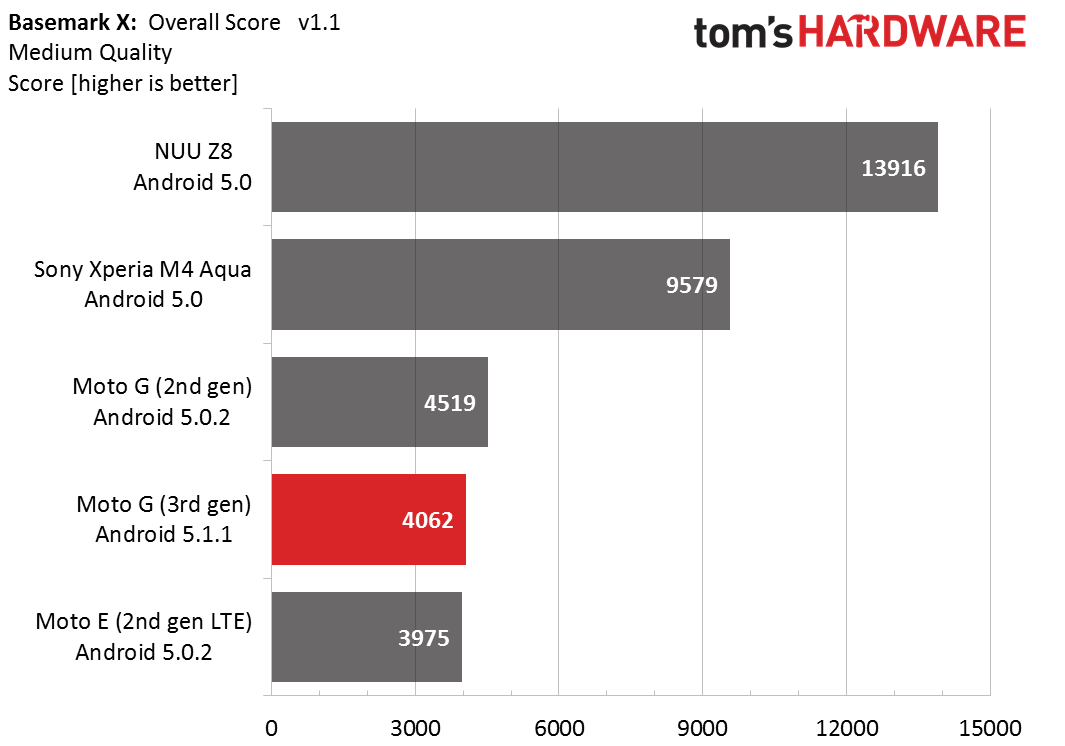
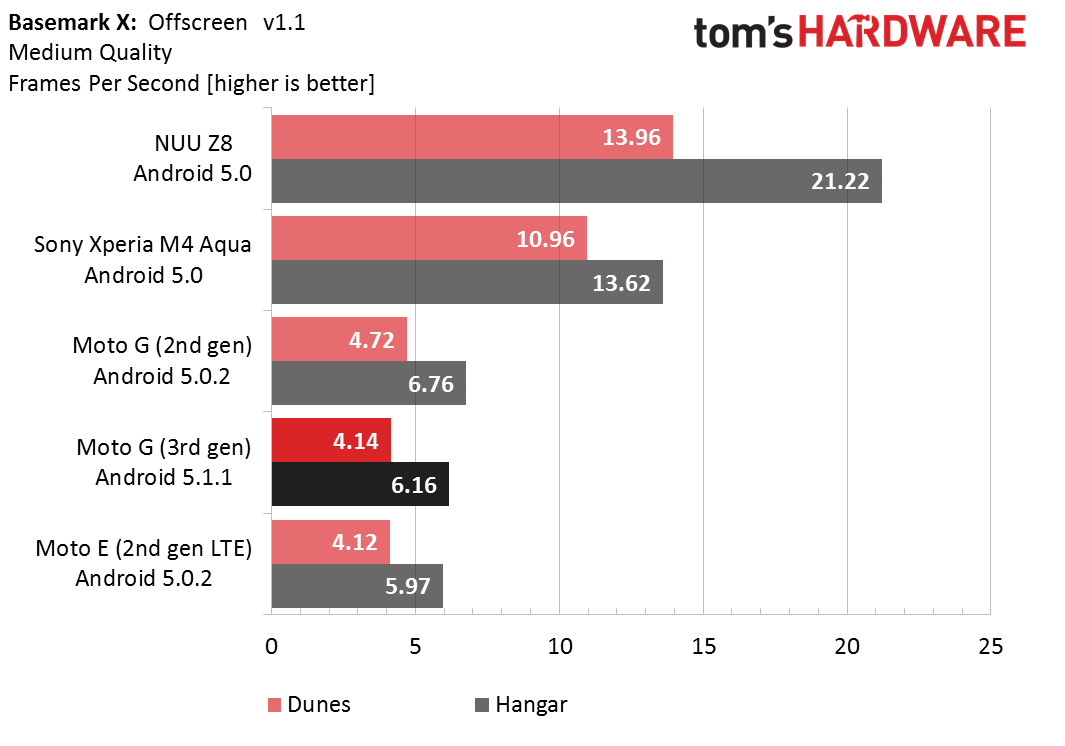
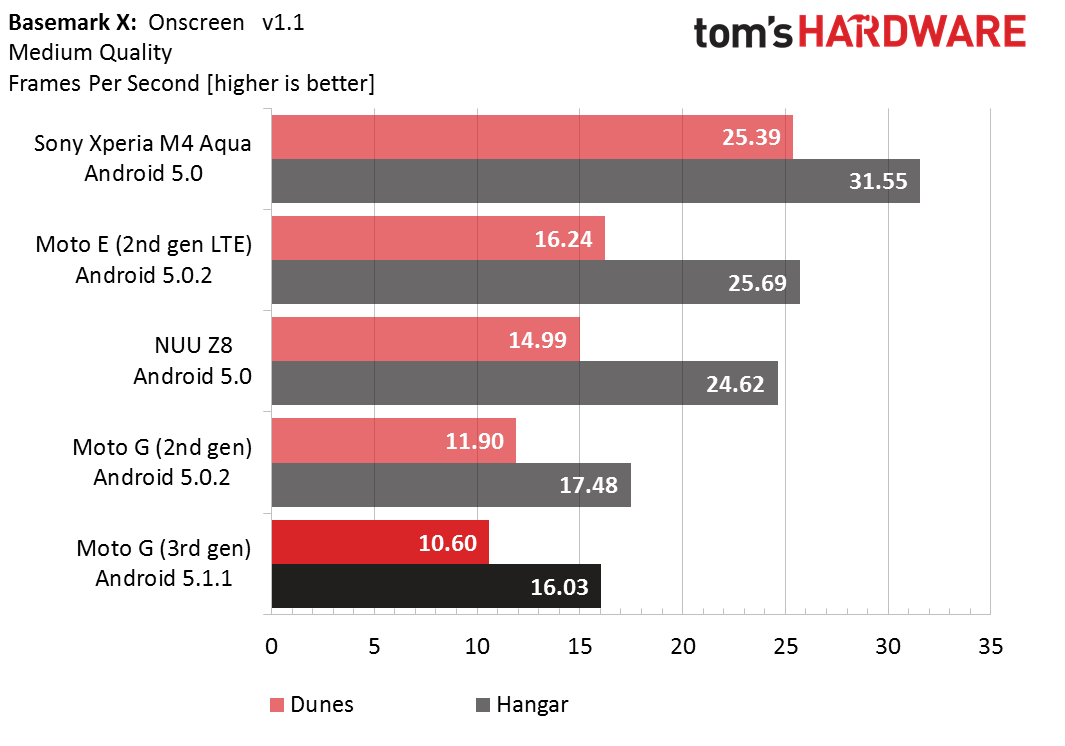
The GPUs in the two more expensive phones again show a significant overall performance advantage. It appears that the Adreno 306 in the Moto G (3rd gen) is a slight downgrade from the older Moto G’s GPU, which scores 11.3% higher overall, a value that happens to be very close to its clock speed advantage.
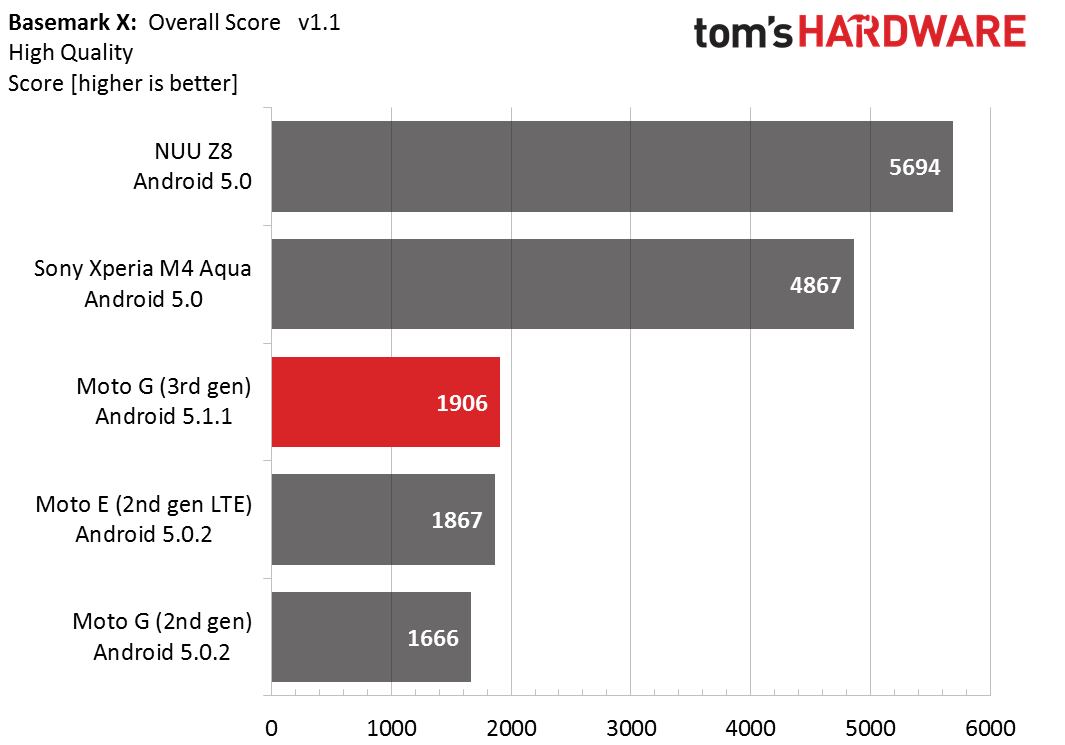
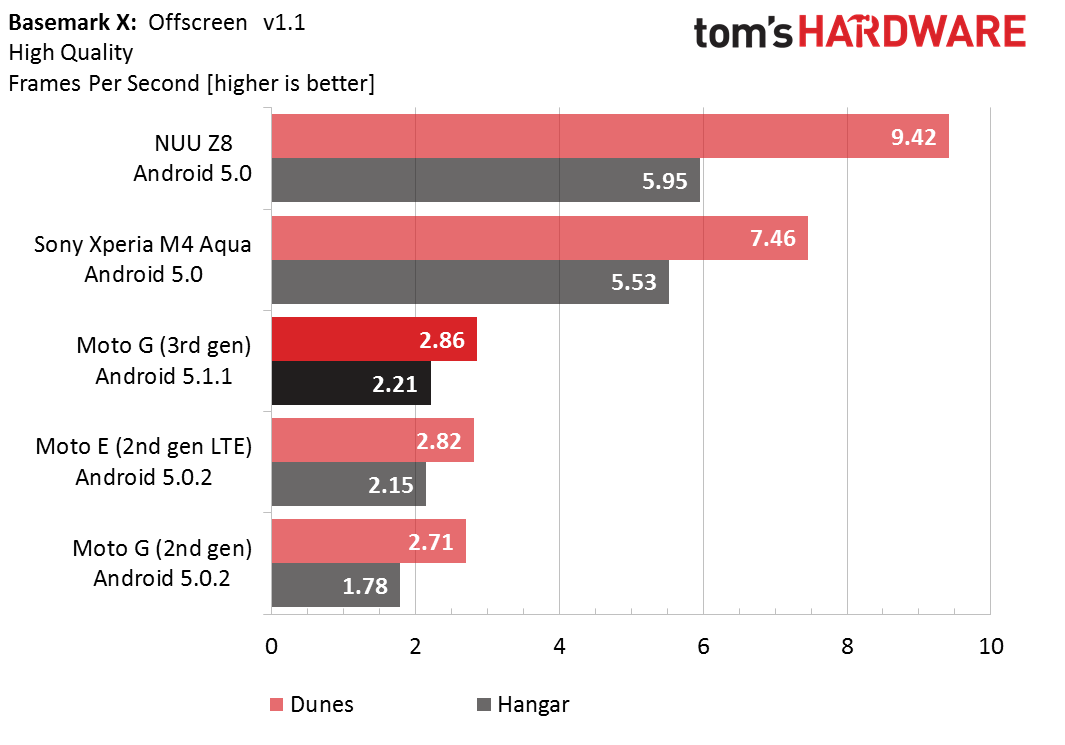
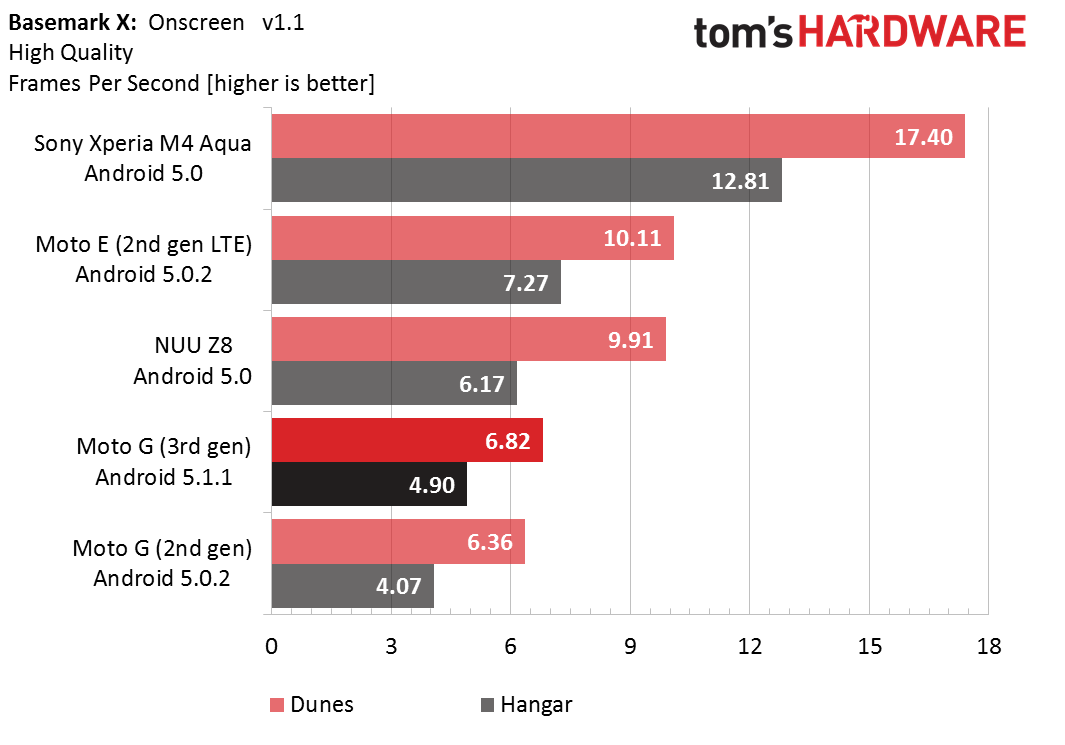
Moving to the high-quality test shows that none of these devices handle Basemark X well at 1080p. What’s interesting here, however, is that the Adreno 305’s clock speed advantage is nullified by the older Moto G’s limited memory bandwidth, allowing both the Moto G (3rd gen) and Moto E (2nd gen) to jump ahead in offscreen performance. The finishing order in the onscreen test gets shuffled a bit due to the different display resolutions.


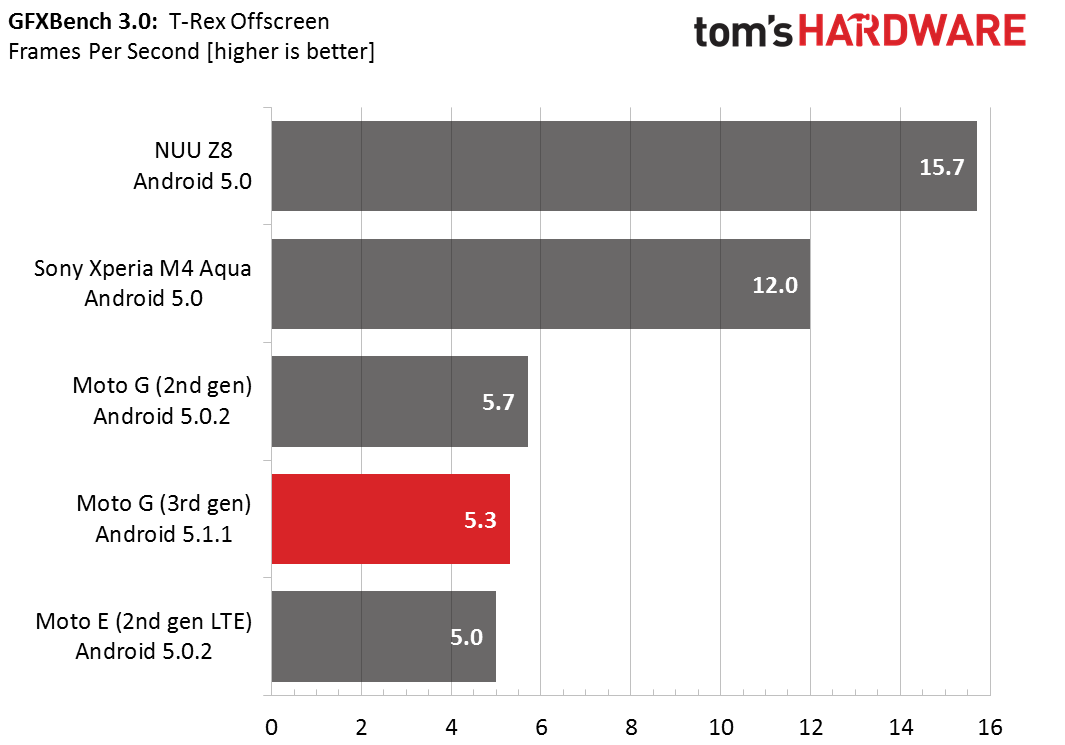

The GFXBench Manhattan test is an OpenGL ES 3.0 game simulation that uses many of the advanced effects seen in modern games. It should be clear by now that neither the latest Moto E nor Moto G are gaming powerhouses. The Mali-T760 GPU in the NUU Z8 outperforms the Moto G by a factor of three in the offscreen test.
Get Tom's Hardware's best news and in-depth reviews, straight to your inbox.
In T-Rex, which is an OpenGL ES 2.0 game simulation that eschews deferred rendering for post-processing effects such as motion blur, parallax mapping, planar reflections, specular highlights, and soft shadows, the Mali-T760 in the Z8 maintains its 3x performance advantage in the offscreen test, while the Adreno 405 is more than twice as fast. The third-generation Moto G’s older sibling also holds onto its slim lead thanks to its higher clock frequency.
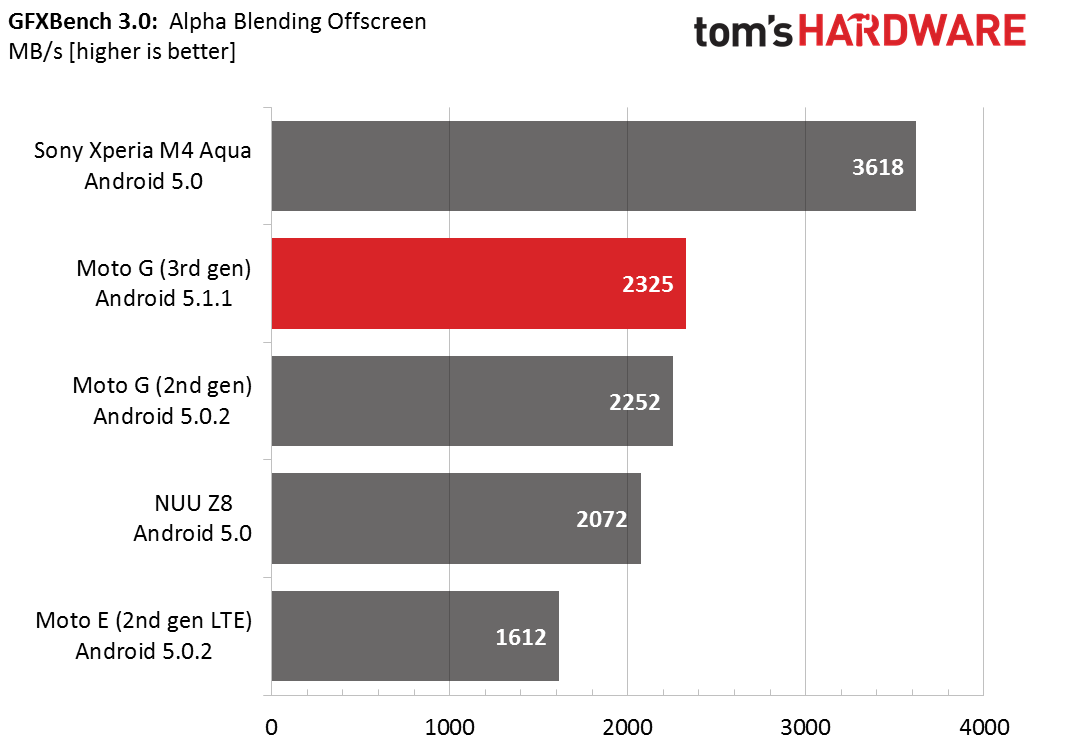
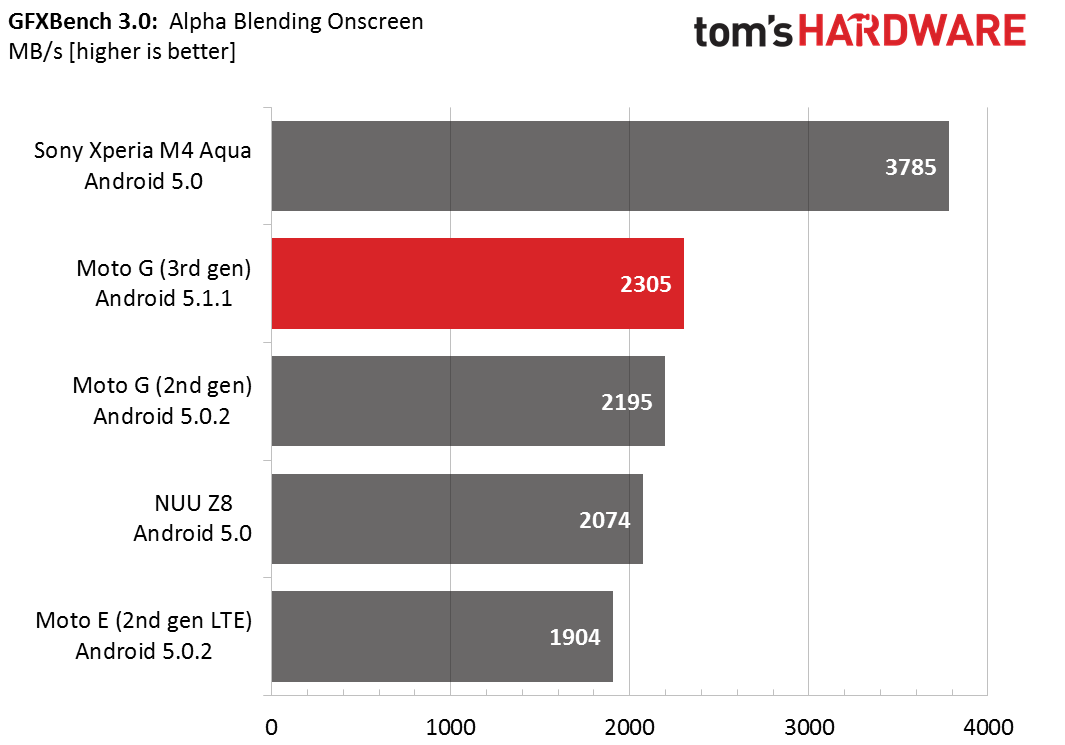
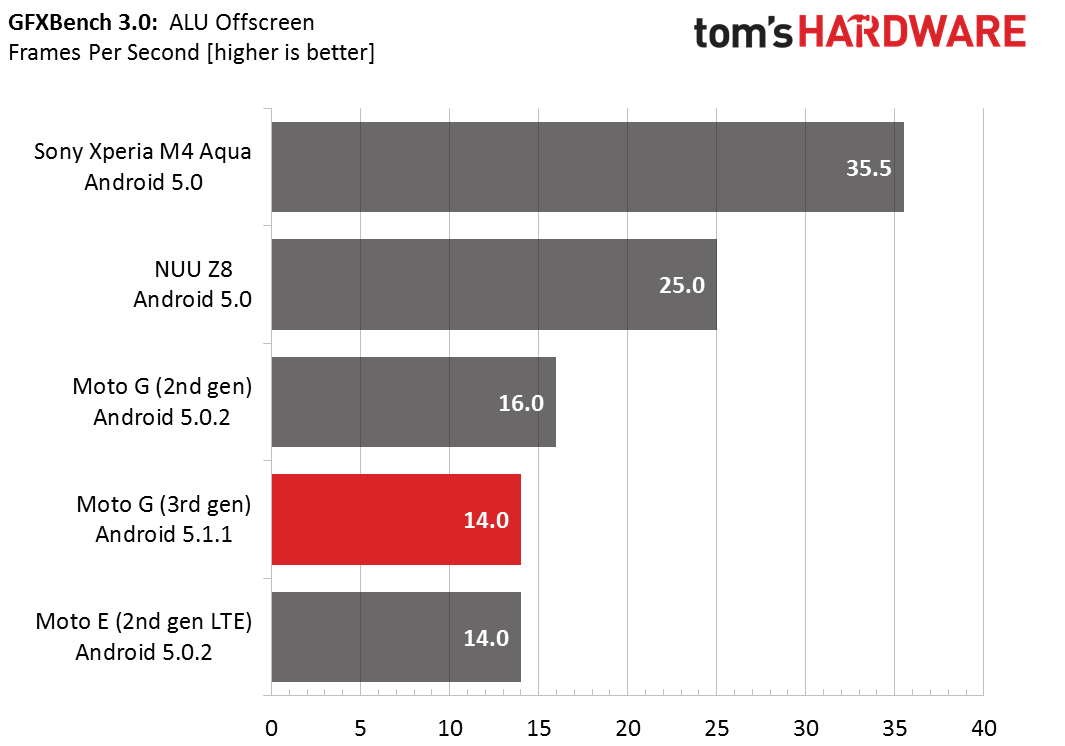
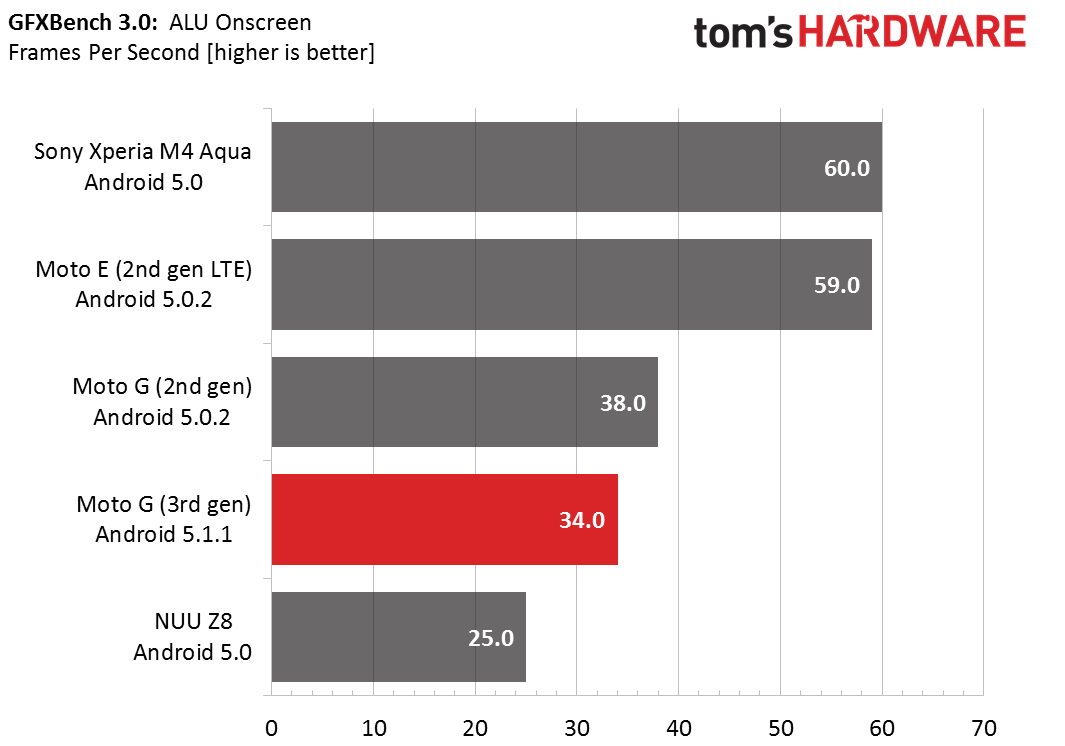
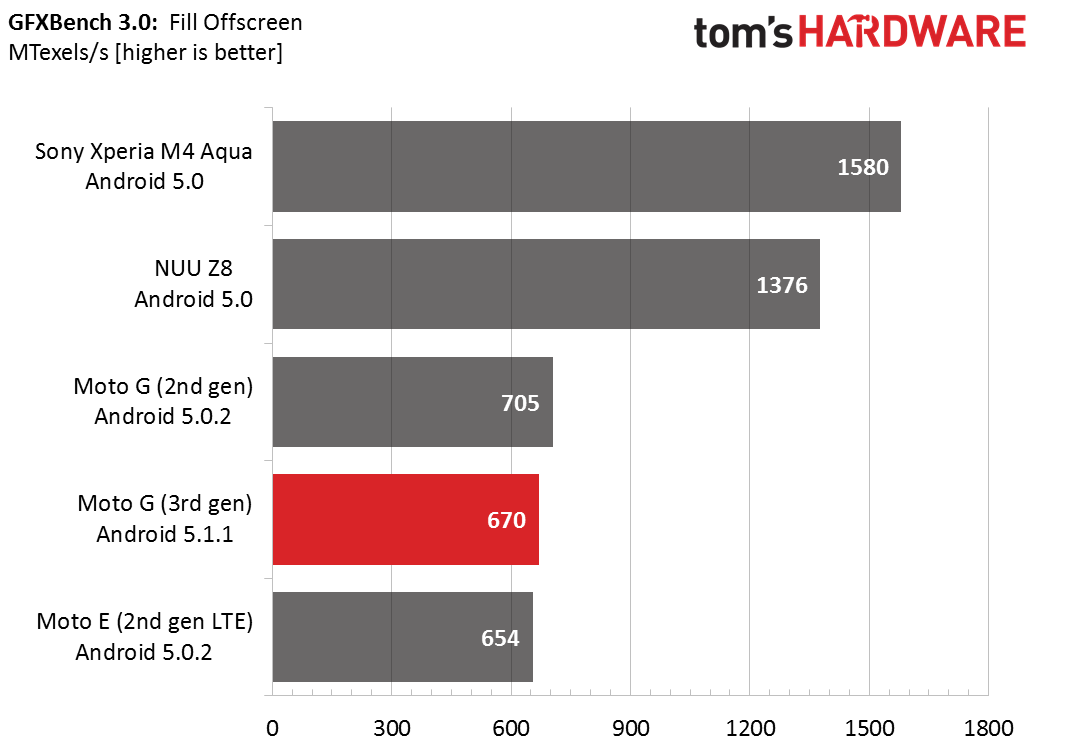
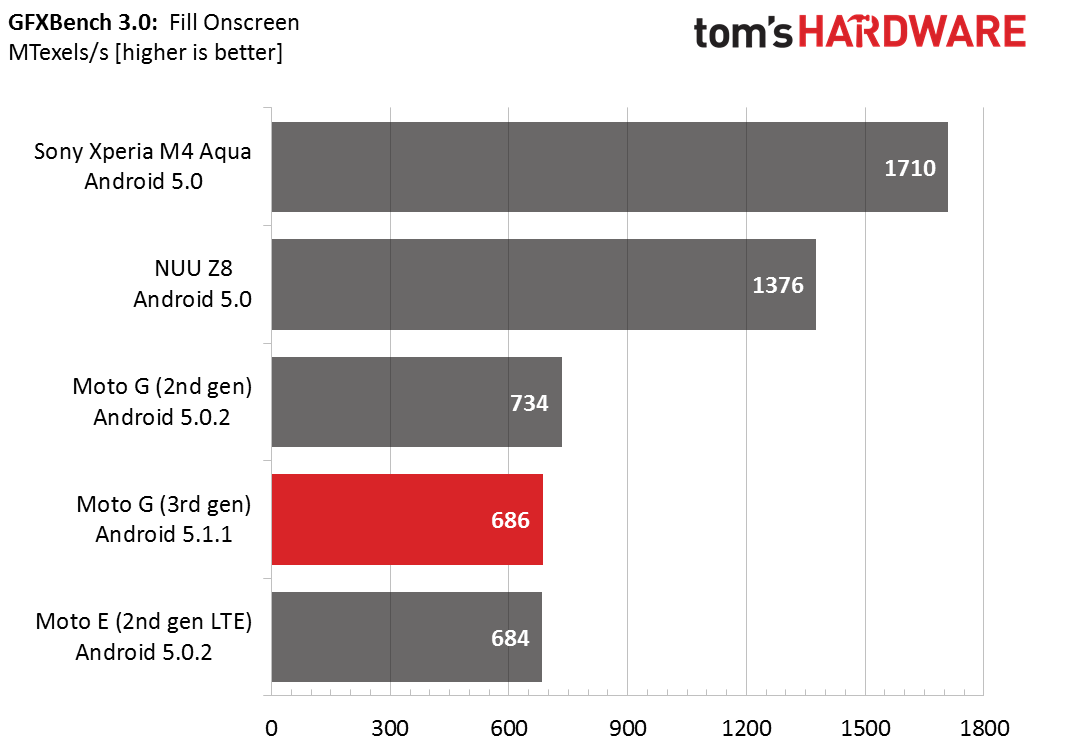
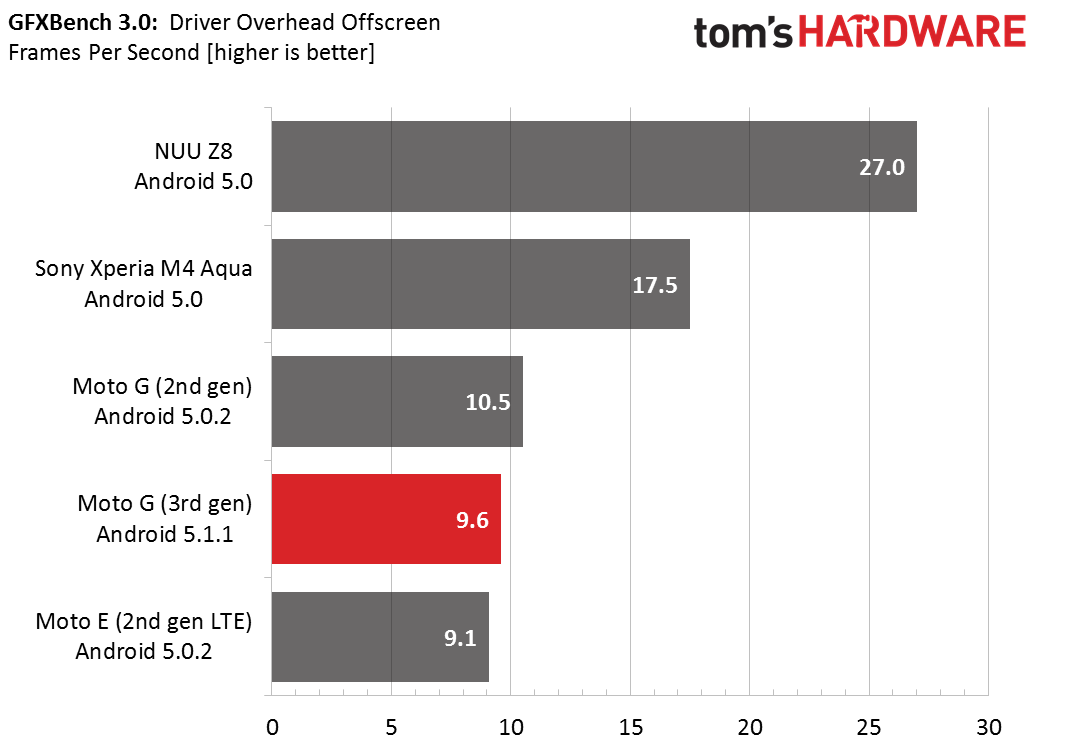
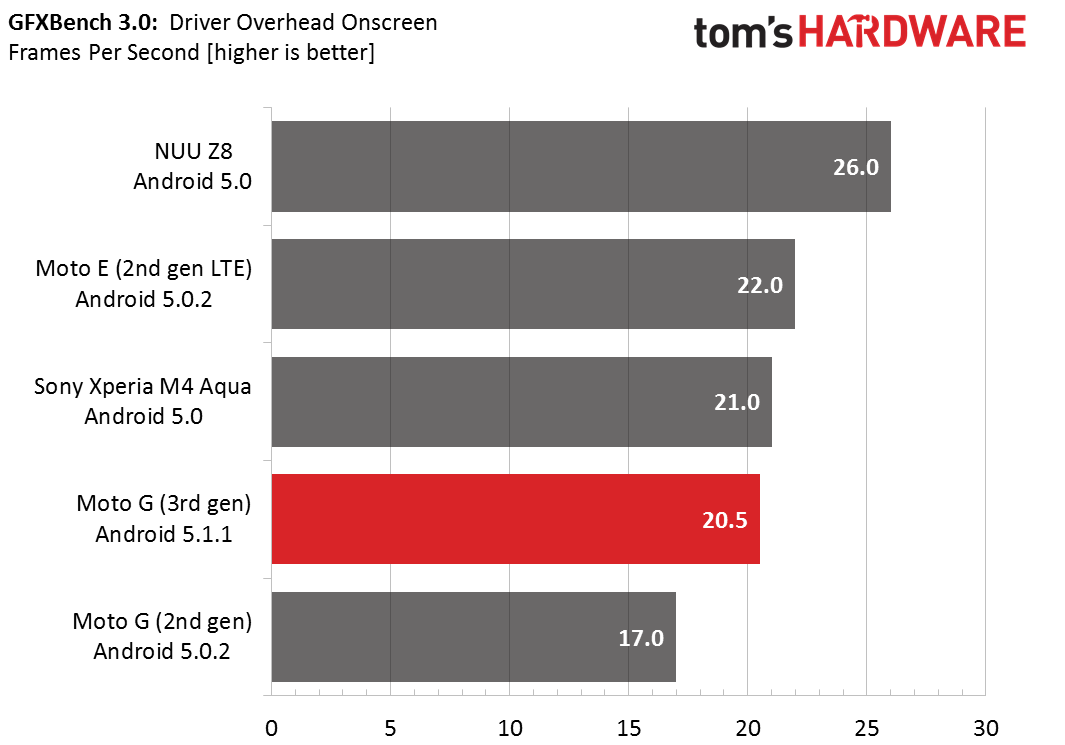
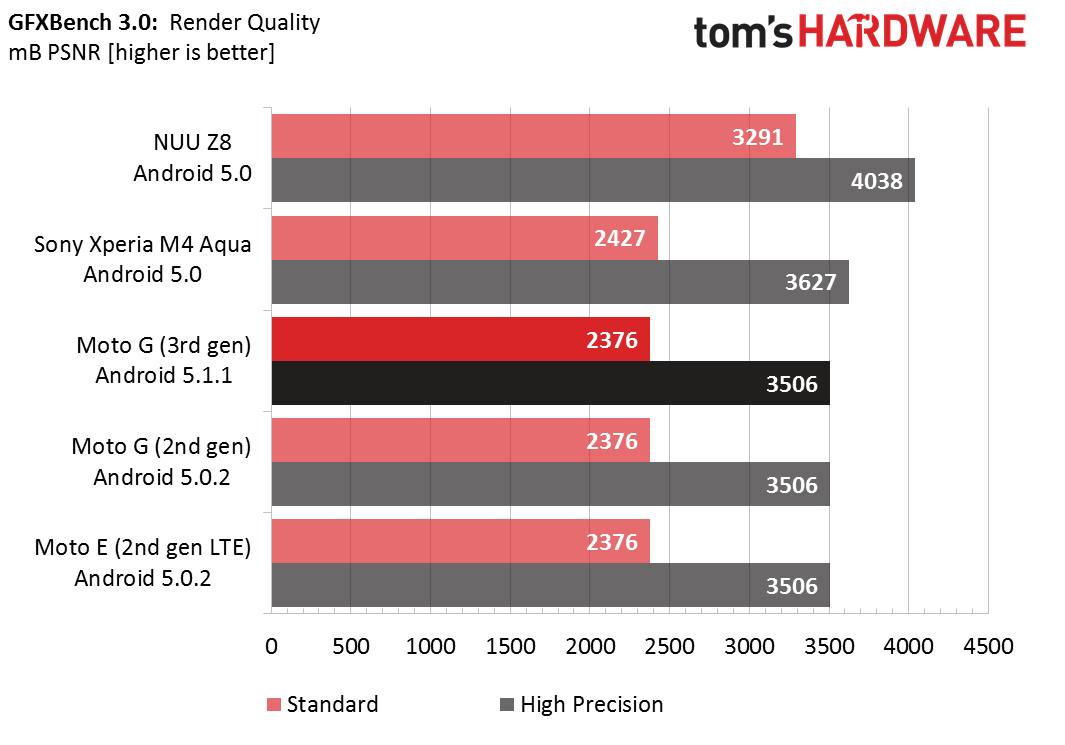
The GFXBench Alpha Blending test stresses memory bandwidth and rasterization. It’s no surprise then that the third-generation Moto G pulls ahead of the other Moto devices once again. What’s significant here is that the Moto G (3rd gen) performs better than the NUU Z8 in this test. This suggests that the Adreno GPU in the Moto G might actually have more ROPs than the Mali-T760 in the Z8.
Qualcomm’s Adreno GPUs are the current king in ALU performance. The Sony’s Adreno 405 GPU flexes its compute muscles and powers ahead of the Z8. The Moto G (3rd gen) closes the gap some with the Z8 but still falls far behind. There does not appear to be any difference in the number of ALUs between the Adreno 305 and 306 since the second-generation Moto G pulls ahead of the newer model by virtue of the difference in clock frequency.
What all of these tests are showing is that GPUs that can now be found in higher-priced mid-range devices, such as the Adreno 405 found inside the Snapdragon 615 or the Mali-T760, easily have double or triple the gaming performance of the latest Moto G. Although Adreno 305/306 may have been more appropriate for last year’s mid-range devices, it feels like this year the new Moto G should’ve gotten a bigger graphics boost.
For now, the Moto G (3rd gen) plays many of the latest 3D games alright, including Modern Combat 5: Blackout, Real Racing 3, Dead Trigger 2, and Marvel Contest of Champions. There are some hiccups in the heaviest animations and game scenes, though.
These days, developers can optimize their games for low-end hardware by splitting it into multiple versions, making it easy to remove certain graphics features for less-powerful hardware. So even if the Moto G (3rd gen) can play a game, you may be missing out on some of the features and realism from the fully-enabled version.
Current page: GPU And Gaming Performance
Prev Page CPU And System Performance Next Page Battery Life And Thermal ThrottlingLucian Armasu is a Contributing Writer for Tom's Hardware US. He covers software news and the issues surrounding privacy and security.
